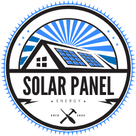Shingled Solar Panels: The Advance for Photovoltaic Technology
1-Supporters of Solar
Solar power has quickly become a foundational piece of renewable energy production. Photovoltaic technology is an ever-evolving area, so new designs and ideas are constantly being developed. One of those innovations is shingled solar panels; a new technology that improves the efficiency and output by as much as 15% for popular residential systems. So let’s dig into how shingled solar panels work, what they’re good for and not so hot at and why a feature that might be considered by some to be a shortcoming could actually help get more renewable energy on the grid.
2-What are Shingle Solar Panels?
Front-stacked photovoltaic panels are analytic back contrasted with conventional sun powered sections and the shingled sunlight based modules have separate personalities. In contrast to regular panels which have solar cells laid out in a grid pattern with empty space between each of these individual cells, shingle panels are the type where the solar cells overlap similar to overlapping roof tiles. This layout reduces the length of cell sides and simplifies connection to PV materials.
Design and Construction:
An arrangement of the cells: Each cell is cut into strips and placed in shingles, hence referring to it as a shingled panel. They are then electrically connected creating a continuous path through the entire strip.
Electrical Connections: Older panels have rows of bus bars which are the areas that connect solar cells and can become places for resistance. Because shingled panels can utilize a more efficient technique of fabrication, fewer interconnections are necessary and resistive losses decreased.
This one-of-a-kind design not only adds aesthetics but boosts the panel performance.
3-Benefits of Shingled Solar Panels
- Increased Efficiency:
Many shingled panels deliver more power output than traditional ones do by cutting the resistive losses and increasing electrical flow between cells. It is therefore able to produce more electricity for the same amount of sunlight.
Less Hot Spots: Traditional panels have a problem with hot spots due to shading or damage. This becomes possible if we use a shingled design that distributes the electrical flow more uniformly across the panel.
- Improved Low Light Performance
Enhanced Light Capture: The overlapping cells in shingled panels are better at capturing diffuse light, which improves performance on cloudy days or in low-light conditions.
Uniform Power Generation: Shingled panels can maintain more consistent power generation even when parts of the panel are shaded.
- Enhanced Durability:
Less Electricity Interconnects: There are less possible failure points, through the reduced variety of electric interconnections in shingle panels. In turn, this improves the panels’ overall durability and lifespan.
Increased Strength: It also enhances the strength of these panels to bear physical impacts and environmental stresses too.
Aesthetic Appeal: Shingled panels are popular for residential applications where aesthetics play a big part, as it give the same appearance of monocrystalline ones.
Higher Style: Shingled panels offer a more sleek and updated aesthetic with all continuous, flat surfaces. This can be very attractive, particularly in residential applications where appearance matters.
Integration with Architecture: Their design allows for more flexible integration into various architectural styles and building designs.
4-Disadvantages and Challenges
- Higher Cost:
Higher Production Costs: Typically, the manufacturing process for shingled panels is more involved and can push production costs higher. These costs are often borne by consumers, making shingled panels more costly than traditional charges.
Cost-Benefit Analysis: The higher cost of gasoline heat pumps when you first purchase it should be outweighed by the efficiency and future savings that may come with them in other implementations.
- Limited Availability:
Market Penetration: Shingled panels are not as widely available as traditional panels. This limited availability can restrict consumer choice and affect installation options.
Specialty Manufacturing Requirements: As an example, shingled panels require specialized manufacturing processes and materials, which can constrain the number of producers offering them.
5-Applications and Use Cases
- Residential Installations:
Energy Efficiency: For anyone wanting to generate the most energy-efficient output possible that translates into saving on electricity bills, shingled panels is a must for homeowners.
Shingled panels are often used in residential applications where appearance is a main consideration as the design creates an attribute that homeowners find attractive.
- For Commercial and Industrial Use:
Best Suited For: Commercial and industrial facilities that are in need for a high power output/ efficiency, shingled panels show top-notch results.
Optimizing Roof Space: If you are constrained on space, this is perfect for any install since shingled panels can really take the most out of your limited roof area.
6-What the Future Holds for Shingled Solar Panels
- Technological Advancements:
Improved Efficiency: Additional research and development in the field of shingled panel technology is expected to yield even more efficient components going forward.
Lower Cost: Utilization of shingling in the panel should become cheaper to stomp out as production processes are refined and scale ramps up, eventually benefiting a wider audience.
- Market Growth:
Adoption rates: We expect adoption of Modules 2.0 to increase quickly as the advantages over standard panels become apparent and stage-level costs competitive with incumbent systems
Innovation Trend: Shingling formats might enable new form factors of solar modules, even beyond its slight gap row.



